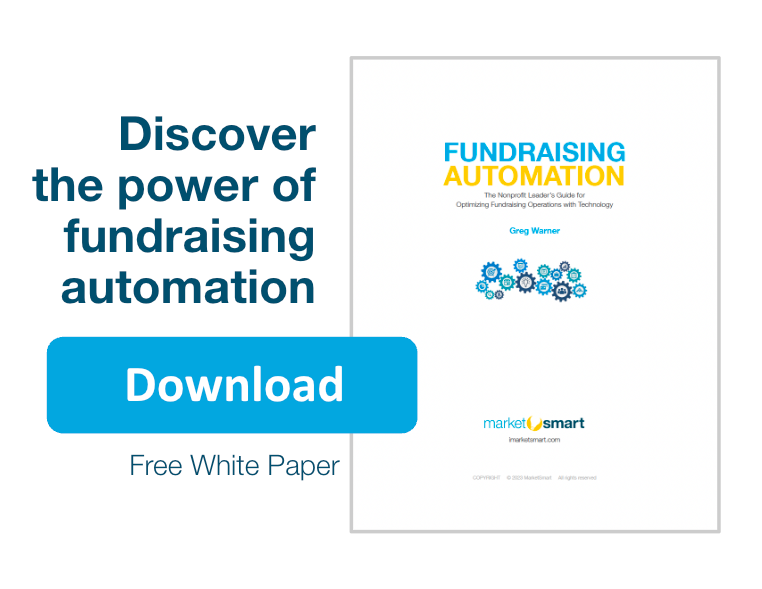A debate has been growing in recent years regarding the practice of offering major donors the option of giving restricted gifts. A restricted gift is one that is designated for a specific purpose, whereas an unrestricted gift allows the nonprofit to use it in whatever way it wishes to further its mission.
There are strong points in favor of both positions.
And in the spirit of understanding, we’ll begin by looking at both. Then, we’ll look at what research has to say about restricted vs unrestricted gifts, and the course of action we suggest your nonprofit take.
If you can think of other reasons why donors and nonprofits feel the way they do about restricted giving, feel free to let us know.
Why Donors Love Restricted Gifts – Social Emotions
Donors give the most money when the act and experience of giving produces stronger social emotions. Three of the strongest, according to brain research from Dr. Russell James, include empathy, identification, and visualization.
Experiencing these powerful emotions is often heightened through restricted giving. This makes them want to give more. And it makes their experience of giving that much more fulfilling.
Here are four reasons why restricted giving makes that happen.
1. Enhances the Donor’s Giving Story
By marking out their gift for a specific purpose, it deepens the donor’s personal life story and the role giving plays within it. Donors give because they want to advance their story, where they are the hero. And giving is a heroic act, by definition. Giving a transformative gift is, for many, even more heroic.
By giving a restricted gift, the donor’s story is enhanced that much more because it makes their story that much better.
2. Gives Clearer Picture of Impact
Following up on the first reason, a restricted gift allows the donor to say, “I did that!”
That’s a powerful feeling, when you can look at something and clearly explain the role you played in saving, building, restoring, securing, rescuing, or helping. Rather than simply saying you gave to a particular charity, you can point to a building, a person, a group of people, a program, or something else specific that your money made possible.
This isn’t a selfish motive. All of us want to do something with our lives that matters, that wasn’t easy, that has permanence, that will live on after our lifetimes, and that came out of our own blood, sweat, and tears.
3. Gives Their Character a Bigger Role in the Fundraising Story
The donor wants to be the hero, not the sidekick. A restricted gift positions them as a change-maker, an innovator, a risk-taker, a leader. It sets them apart, because they made something happen that was big, that people noticed.
Even if the restricted gift goes to something like a matching grant, the donor can then look at the final amount raised and what it supports, and feel great satisfaction at the outsize role they played in securing that amount of money for a cause they care about deeply.
4. Feel More in Control
Lastly, restricted gifts are about control. Is control a bad thing? It depends on who you ask. From the donor’s point of view, they see it as a way to ensure their money makes the biggest possible difference.
Charity:Water famously told all their donors that 100% of their donations would be used to fund their actual work building wells. How could they make that promise? Because they obtained a series of restricted gifts from donors who deliberately chose to fund all the administrative expenses.
Most donors don’t want to think about their money paying for the essentials like staff salaries, rent, and the power bill. But these donors actually gave specifically to those purposes, so all the other donors could then be told that 100% of their gifts would bring clean water to people who needed it.
For those donors, that’s what control looked like. For other donors, it can mean other things. From the donor’s perspective, restricted giving is about having the greatest possible impact – however they define that – and making sure their vision comes to fruition.
Why Nonprofits Love Unrestricted Gifts – Flexibility
In contrast to donors, organizations look at their budgets, their staff, their expenses, and their mission, and they would prefer (and need) a big pot of money so they can quickly and easily fund their priorities and serve their beneficiaries. They are in touch with the community in need of financial support and services. Therefore, the staff who are deeply involved in the community and the programs know where the dollars are needed most. They need flexibility in order to do their jobs well.
Restricted gifts complicate their efforts, and force them to wiggle and swerve around obstacles.
“It would be much easier if we could just use the money how we need to,” say most organizations. Here are four reasons nonprofits don’t like restricted gifts and prefer flexibility instead.
1. Locks Up Money While Other Areas Are Underfunded
Imagine trying to field a football team with a quarterback and ten wide receivers. The offensive line isn’t the most glamorous job, but your quarterback is toast without them.
Restricted giving feels like that to nonprofits. We’ve got all these other things that cost money and that we need to fund, but this big huge pot of money is stuck over here because of the rich person and their overbearing need to control how we use their money.
That’s a frustrating reality for organizations to navigate.
2. Harder to Make and Keep Promises to Other Donors
Suppose a handful of major donors provide all the funding for the main mission of your organization through restricted gifts. All remaining funding will thus go to support administrative costs and other needs.
That means, in any other fundraising campaign that year, you can’t truthfully promise other donors that their money will go directly to help your mission, because the major donors ‘hogged’ all the glory.
Now, you wouldn’t tell your donors that, of course, but it’s still worrisome because people ask questions, and explaining this sort of thing can get dicey.
3. Permanent Restrictions Provide Limited Benefits
Not all restricted gifts are created equal. Some are set up to be temporarily restricted, while others are permanent.
For example, a donor might give their entire Donor Advised Fund (DAF) to a nonprofit, but wants it set aside for exclusive use to fund a new facility. A temporary restricted gift might require that arrangement for a specified length of time, such as five years. After five years, presuming the building has been built, any remaining funds can be used at the nonprofit’s discretion.
A permanent restriction would require the nonprofit to continue using those funds for a specified purpose, even after the building is complete.
And some restricted gifts are even more cumbersome. For example, they might be required to keep the DAF at its original value and only use the interest it produces. This may not amount to much money, especially in a down economy and depending on the size of the DAF. In that scenario, you’re getting recurring income, which is good, but you’re prevented from ever accessing the lion’s share of the money.
Meanwhile, all these needs are struggling to be funded. That’s frustrating.
4. The Gift May Not Align with the Organization’s Greatest Needs
A donor may donate something like land, or artwork, or even a whole building. But what if that’s not really what the organization needs at the moment?
Sure, they might be able to leverage that asset at some point, but right now, they just need money to achieve certain things on behalf of their beneficiaries. The organization wants to make a difference, and this gift is more of a distraction than a benefit. But, how can you turn down such a big gift?
So they might take it, but it doesn’t really feel like a win.
The Path Forward with Restricted and Unrestricted Gifts
Can we find middle ground here?
It’s not easy. Both sets of arguments are valid, understandable, and easily defensible.
Here’s the key question to ask:
If you don’t offer restricted gifts as a matter of policy, based on your organization’s values, will you raise more money, less money, or about the same amount?
Research in the Journal of Behavioral and Experimental Economics from 2017 involved sending out two appeal letters. One included a restricted gift option; the other did not. The letter with the restricted giving option raised $40,000 more. But about 98% of gifts from that letter were unrestricted.
Think about that.
Donors were offered the option to give to a specific need. 98% of people appreciated that offer and gave more money, but decided to give an unrestricted gift anyway.
More research in Applied Economics Letters from 2013 found a similar result, and concluded that “Allowing the option to restrict a charitable gift increases the average gift size, whether or not the donor chooses to exercise that option.”
In other words, simply offering a restricted giving option increases their feelings of being respected and valued. It also makes you more credible and trustworthy because you are looking out for what matters to them – their giving experience and the social emotions and personal fulfillment they seek through giving a major gift.
And, the restricted gift paints a clear and vivid picture of what their gift will accomplish. Even if they don’t take you up on the restricted gift, they can see what their money will accomplish. This goes back to reason #2 for why donors love restricted gifts.
By offering a restricted giving option, you are validating their social emotions. And just about all donors will turn down that option anyway.
For that reason, we recommend offering restricted giving as an option. Your donors will appreciate it. Most won’t take you up on it. But you will raise more money because you validated the social emotions in play – which are the key drivers of major giving – and painted a clear picture of the impact their gift will have.
Related Resources:
- The Fundraising Myth & Science Series, by Dr. Russell James
- At last, the one big thing every fundraiser needs to know to be successful
- How Restricted Gifts Can Actually Be a GOOD Thing — And Why You Should Embrace Them
LIKE THIS BLOG POST? SHARE IT AND/OR LEAVE YOUR COMMENTS BELOW!





Excellent article and encouraging for us fundraisers!